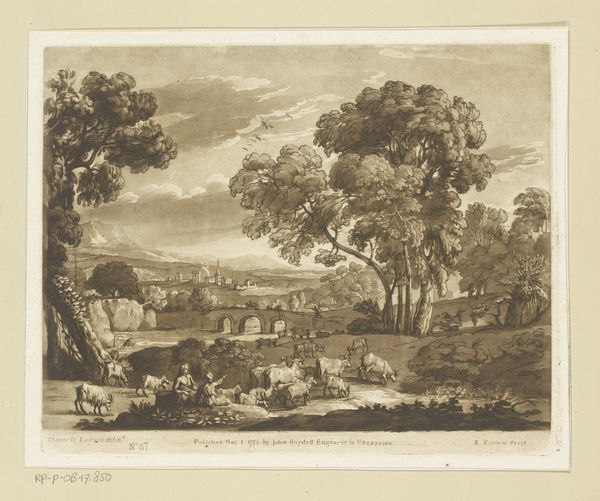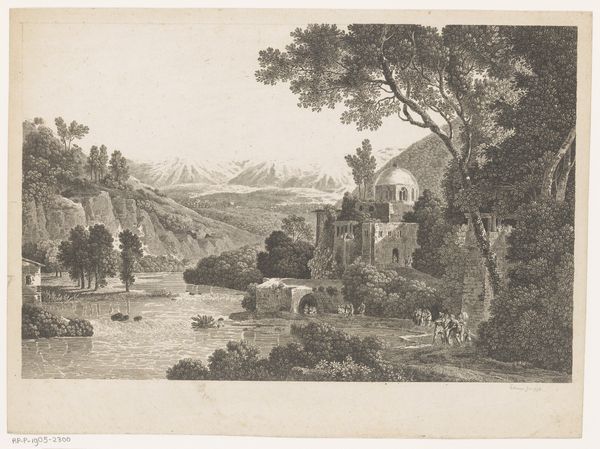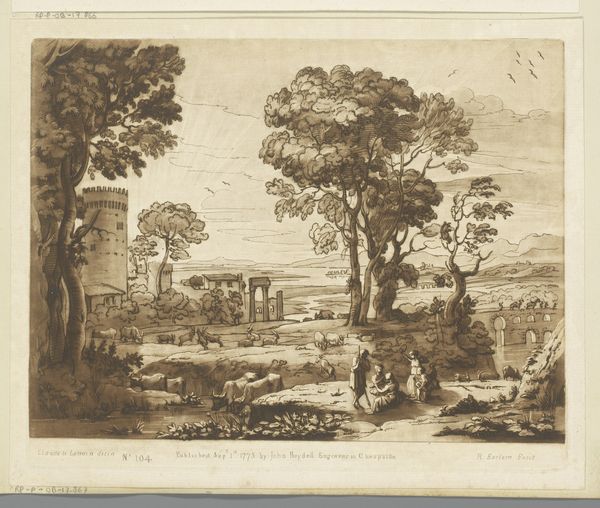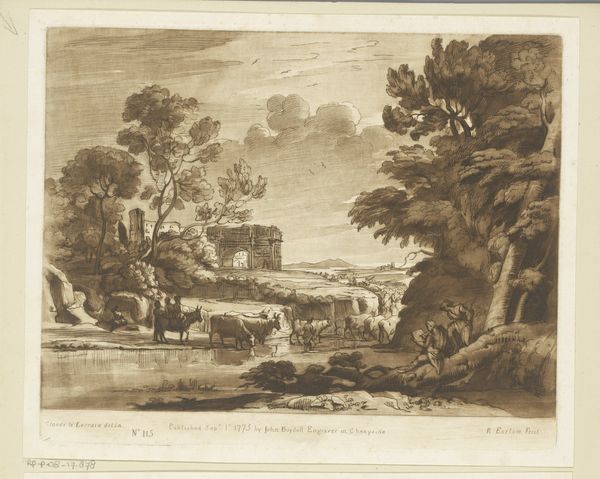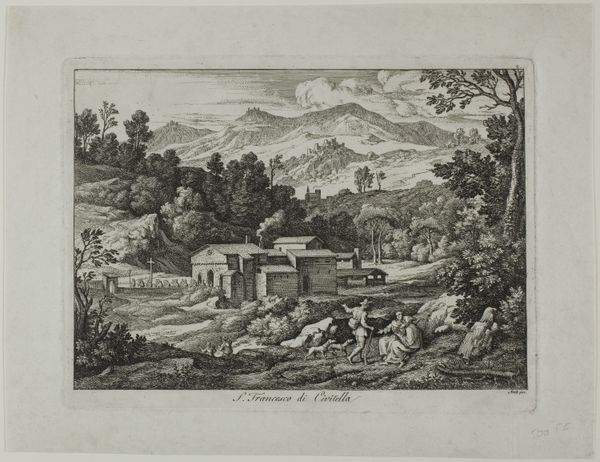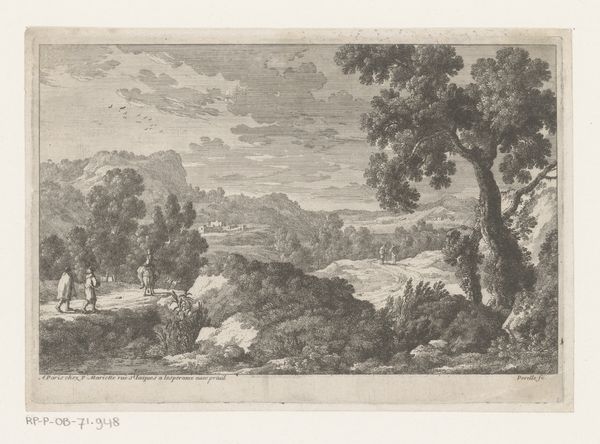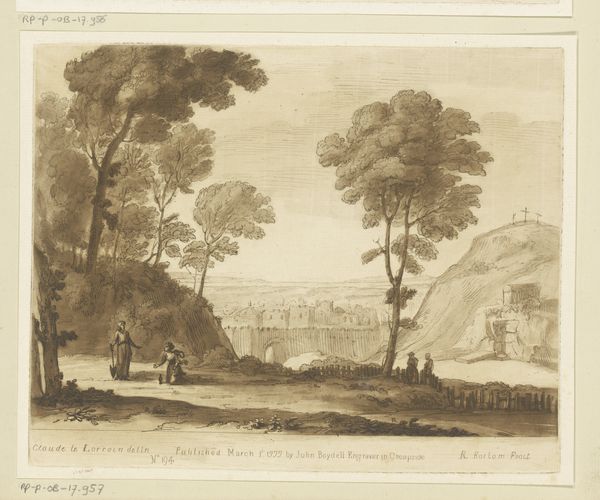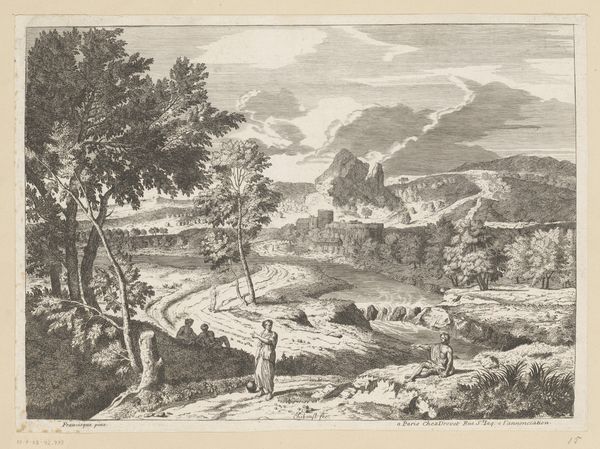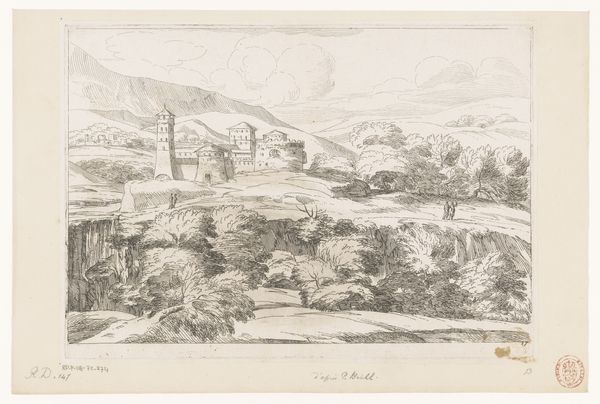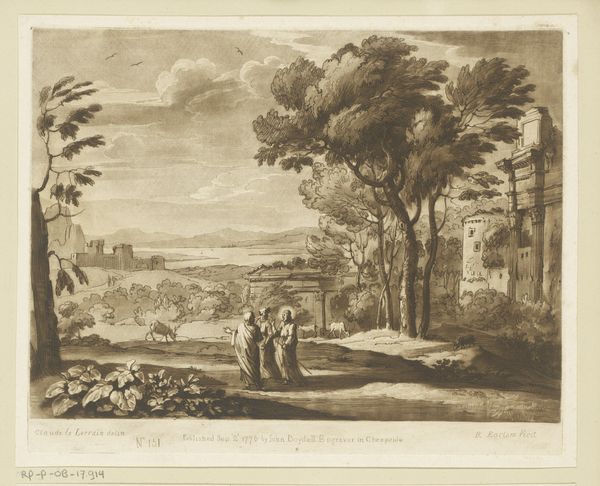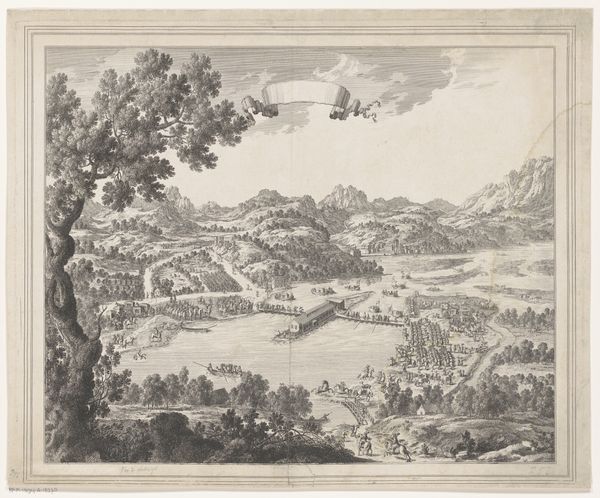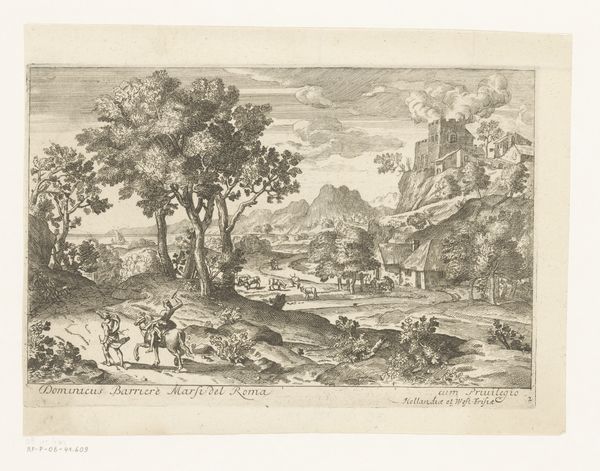
drawing, print, engraving
#
drawing
# print
#
landscape
#
engraving
#
watercolor
Dimensions: height 430 mm, width 574 mm
Copyright: Rijks Museum: Open Domain
Editor: Here we have Constant Bourgeois's "Zicht op het trappistenklooster Casa-Maria in het Koninkrijk Napels," an engraving from 1818. It's a very serene landscape. What story do you think this landscape is trying to tell us? Curator: Landscape, seemingly passive, has often been deployed as a visual battleground. Consider this monastery depicted. It represents not just religious devotion but potentially a site of power, refuge, or even resistance within the socio-political landscape of 19th-century Naples. What can the placement of the figures within the landscape suggest about access and exclusion? Editor: That's a great point. The two figures in the foreground, they seem like observers or maybe even guards? And there are some people crossing the bridge as well, like they belong there. So there is a distinction between who is observing from afar and those with closer proximity? Curator: Exactly! The composition invites us to consider the politics of looking. Who is allowed to see, who is allowed to enter, and whose narrative is privileged in this representation? This monastery, tucked within this landscape, embodies complex histories. Were the Trappists seen as benevolent, providing aid, or as part of a structure upholding existing power dynamics? Editor: So, it is not simply about admiring the pretty scenery but interrogating what it really represents during that specific time? Curator: Precisely. Consider the social and economic realities for those living in the Kingdom of Naples at this time. What were the dominant political ideologies? How might this image subtly reinforce or critique those ideologies? Does the artist include subtle visual cues that might give us a better idea? Editor: It certainly reframes how I look at landscapes now. There's more than meets the eye. Curator: Absolutely! Landscape art often functions as a reflection of societal values, anxieties, and power structures.
Comments
No comments
Be the first to comment and join the conversation on the ultimate creative platform.
